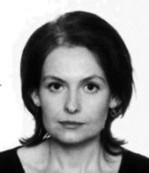Political Parties Operating at European Level
Political parties operating at European level enable to control supranational power in Europe. Thus the political parties operating at European level contribute to shaping policies.
The article opens the concept of the political party functioning at European level, defines it from political foundation at European level and briefly explains the legal bases of the activities of a political party.After that an overview is given of the political parties operating at European level and Estonia’s representation in them.
Political parties operating at European level are generally divided into rightist, centrist and leftist parties.It is also possible to distinguish between liberals, radicals, social democrats and conservatives, although the names of several political parties at European level clearly show their relying on several basic ideologies.It should be taken into account that political parties at European level have grown out of the historically developed political parties of European countries and their dynamics.The system of political parties operating at European level may be called a multi-party system; several characteristic features of a catch-all party – pluralism, information society and other features characteristic of postmodernism – and also, because of the large number of members, the characteristic features of a mass party can be found in the system; at the same time the citizens have the possibility of following and influencing the work of the political parties through global networks (e.g. the Internet).
The need for political parties operating at European level should be assessed both from the standpoint of organising of elections (although the citizens of Member States put forward and elect their representatives to the European Parliament, political parties at European level participate in organising election campaigns to the European parliament) and from the standpoint of reflecting and shaping the political landscape of pluralist Europe.In the integrated Europe of today, the political parties at European level reflect besides all-European political spectrum also the ideological spectrum of Europe – religions, green ideologies, national ideologies, attitude towards minorities (the Roma and other national groups), racism, resistance movements, other ideological tensions – and shape the all-European public opinion through different media channels.
